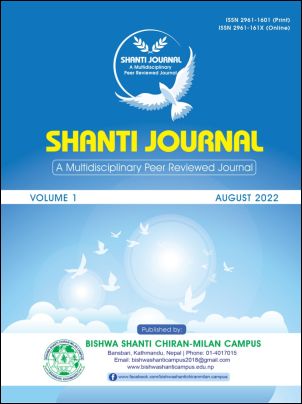Fatherhood and Changing Patterns in the Roles of Black Fathers
DOI:
https://doi.org/10.3126/shantij.v1i1.47786Keywords:
African American, Father, Stereotypical, Absent, Invisible, Present, Changing rolesAbstract
The Afro-American writers of the slavery- era like Harriet Jacobs, Douglass, etc reflect the absence of the black males as fathers of their children. Over the period in the late 19th and early 20th century, the change in this situation can be noticed in the writings of James Weldon and others. In the modern era, the concept of fatherhood has become uniquely important both in the white and black communities. The increased ratio of divorce, birth from unwed mothers, acceptance of cohabitation, has forced many children to live without their fathers. Though the whole country faces the problem of absent fathers, it is acute in the black communities. Concentrating on how the concept of fatherhood is constructed and why it matters so much now, this paper explores the changing roles that the black fathers play in the families. It primarily focuses on whether their role is present or absent in the everyday life affair. It studies why African American fathers are invisible or absent players from behind. It makes a thematic analysis of the selected texts of three different eras: slavery, post-slavery and modern using by using racism, an African American perspective. The study suggests that the black fathers stay in a supportive network of their families in contrast to the stereotypical fathers. Excavating the reasons for the changing modes of the roles of fatherhood in the African American family structure it recommends the necessity of reducing the gap between fathers and children.
Downloads
Downloads
Published
How to Cite
Issue
Section
License
Copyright (c) 2022 Madhav Prasad Dahal

This work is licensed under a Creative Commons Attribution-NonCommercial 4.0 International License.
This license enables reusers to distribute, remix, adapt, and build upon the material in any medium or format for noncommercial purposes only, and only so long as attribution is given to the creator.




